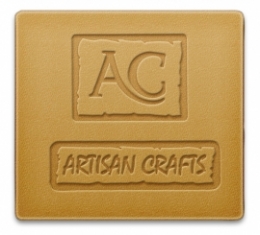
Here's a selection of books I've repaired to give you an idea of what can be achieved.
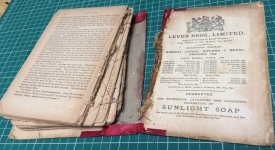
Wilson's Tales from the Borders
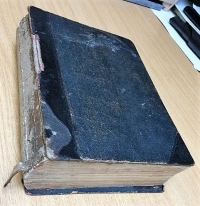
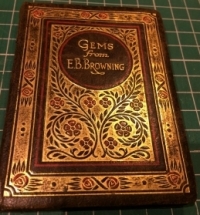
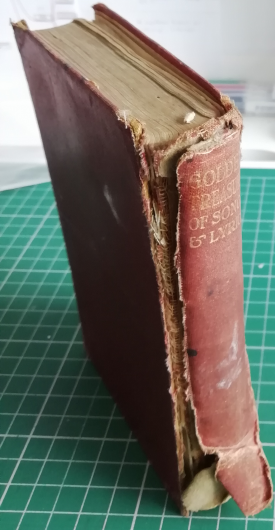
Poetical Works of James Thomson
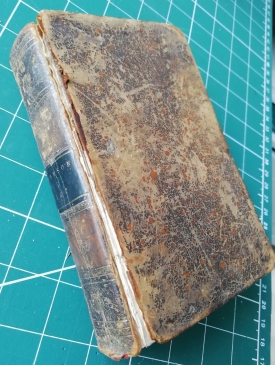
The Cruise of the Land Yacht "Wanderer"
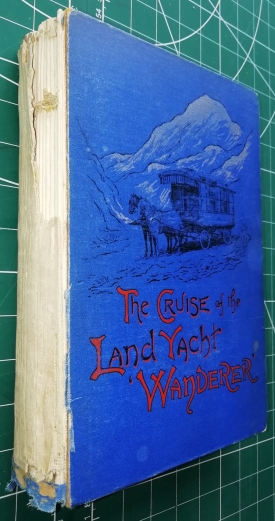
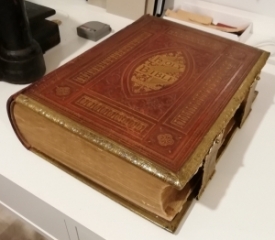
The Necklace of Princess Fiorimonde & other stories
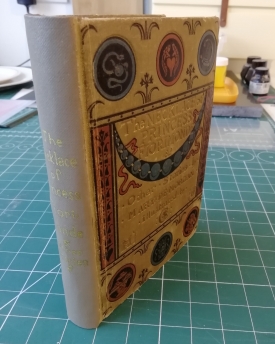
Wilson's Tales from the Borders - Book Repair
This commission was to repair the book and make it useable, rather than carry out a full restoration. The owner wished to retain the well-used appearance, but to be resilient enough to be used by her family.
From this... To this.
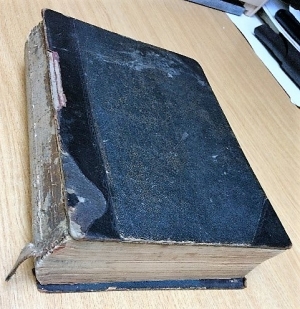
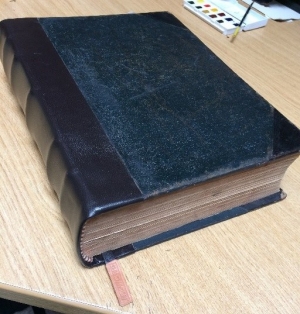
Damage Assessment
- Spine was detached and has been lost.
- Front board was detached
- Back board hanging loose.
- Headband was literally hanging on by a thread
- Marbled front endpaper was detached.
- Significant stains and scratches to the boards.
- The body cords and stitching were in reasonable condition so re-stitching was not required.
Repair Process
Strip remains of old leather spine and cords.
Carefully remove old & cracked glue from spine. This was the most painstaking part of the process but necessary as gluing over the old glue would not provide the required structural integrity. The glue was brittle so it could be broken off, otherwise it would have to have been softened and then cleaned off, which would have taken a lot longer.
Sew in new cords – research indicated the original had false raised cords built into the spine. However, the original cords had disintegrated where they would have been attached to the boards, so new cords were stitched over the old ones so as not to disturb the original stitching.
A piece of book-binders mull was then glued over the cords and left to dry.
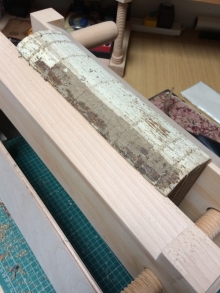
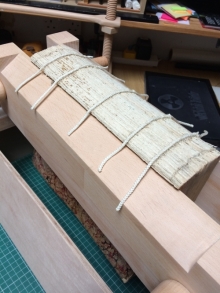
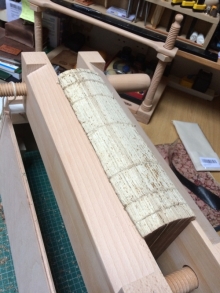
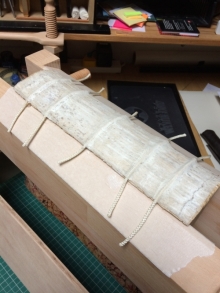
The original headband was not recoverable, so a new one was created using similarly coloured threads. A headband is necessary to protect the top of the spine when removing from bookshelves, particularly with heavier books.
The headband body and mull were covered with strong brown paper for further strength. Care is required on material choice here to allow for compression as the book is opened, otherwise it won't open and flow properly.
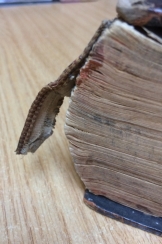
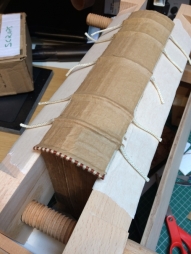
The next part of the process was to channel out slots for the cords in the boards.
The channels go over the outside edge, through to the inside, angled at 45 degrees (ish), brought through to the front and then then fanned out. This provides optimum strength to prevent the cords from being pulled if the book was handled badly. (Apparently the damage was caused by the owner's father falling asleep whilst reading it and it falling to the floor - nothing to do with the whiskey & pipe!).
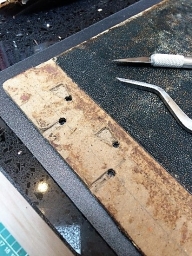
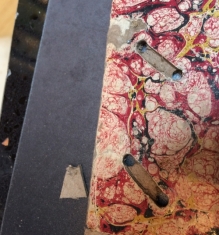
The cords were then passed through the slots, tightened, fanned out, glued into place and then pressed whilst drying, protecting with an acetate sheet, which was removed after a few hours to allow to dry completely.
The glued area and tops of cords were shaved so that once the leather was applied there would be no sign of the cords.
Channeling the cords like this is necessary on such a heavy book.
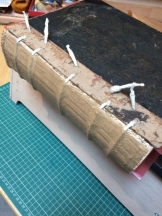
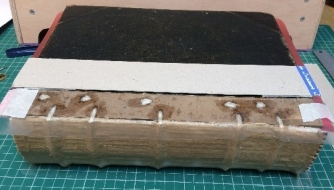
Half-leather binding. This required a bit of guess-work as research on the internet could not reveal any photos of an original Wilsons Border Tales that was a two-volume binding – I could only find single volume and triple volume books.
Fortunately, I already had a piece of kid skin which was a very close match. This was cut to size then the long edges were skived down to a thickness to match the existing cover. The top & bottom edges were thinned down similarly so as not to be bulky when folder over and glued into place.
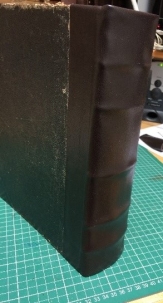
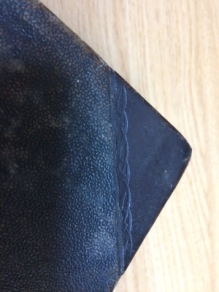
The cover was glued on to the front and left to dry. Once dry it was stretched over the cords, glued to the back and clamped in place, ensuring no glue went onto the actual spine so that spine cover would be loose, allowing the book to lie correctly when open. I left the original leather corners on so as to retain the worn but well-loved looked.
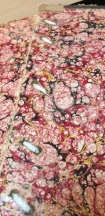
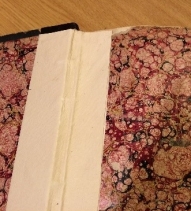
Due to its weight, the book required an inner spine strengthener due to the fragility of the pages. Normally this would be applied under the end-papers so as not to be visible. As it would be impossible to lift the original end-papers or to replicate the original marbling, a leather strengthening hinge was applied over the papers (this also hid the glued-on cords and channels). Not ideal but doing it properly would sacrifice the original look and make it look too new.
The final part of the process was to repair some of the damage to the front and back covers. I could lift some of the stains without damaging the paper, but not all. Given that the original papers had been scratched and torn around the edges, these required tidying up and gluing to limit further damage when handling. To improve the appearance and reduce the ugliness of the stains and scratches, I mixed a water-colour wash to match the existing colour and applied to the worst of the marks.
No lettering has been applied to the spine, as it is not clear how the original would have appeared, although the picture shown may have been similar (but this is a 3-volume edition).
This could be applied in future if this is discovered.
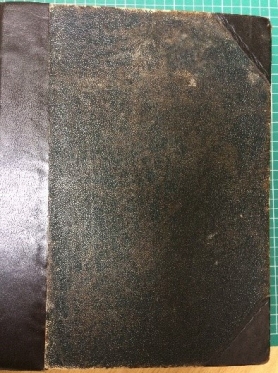
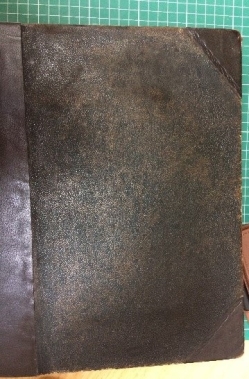

Further Information
This edition was most likely printed in 1884.
A pristine copy would fetch a few hundred pounds, with the most expensive edition in the US going for $900.
There is a society of enthusiasts based in Berwick upon Tweed (Wilson’s home town) whose aim is to breathe new life into ‘The Tales’.
They have a website www.wilsonstales.co.uk or you can write to them at
Mill Farm Tweedmouth Berwick-upon-Tweed TD15 2HP
Brian Pollitt Artisan Crafts May 2018





